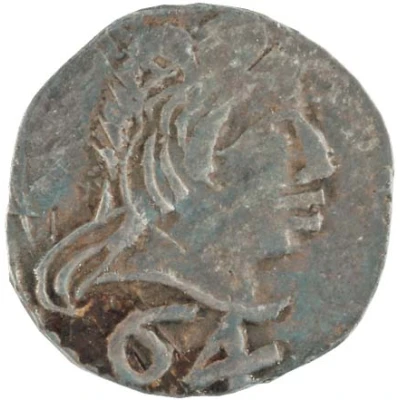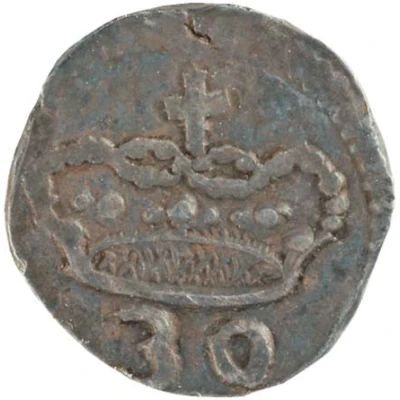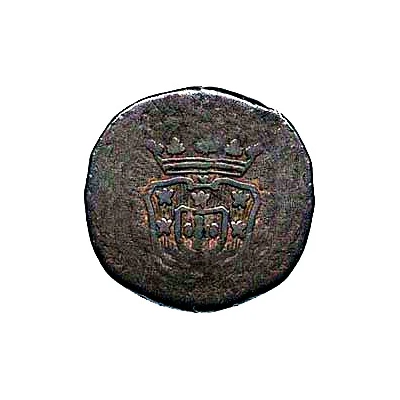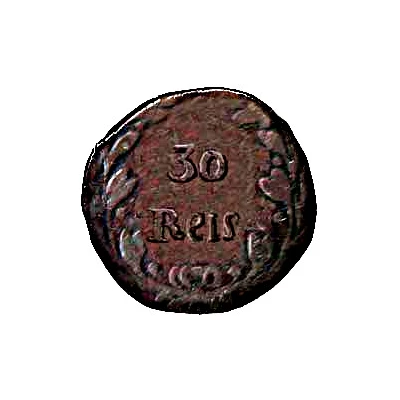
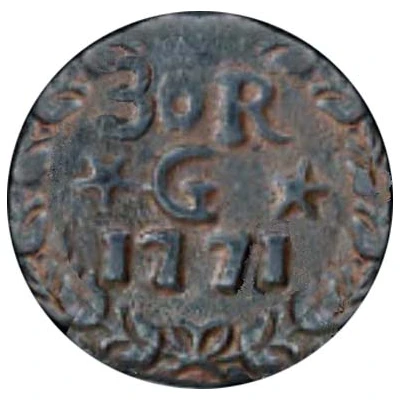

30 Réis "½ Tanga"- José Goa
| Copper | 20 g | 33 mm |
| Issuer | Portuguese India |
|---|---|
| King | José I (1750-1777) |
| Type | Standard circulation coin |
| Years | 1759-1778 |
| Value | 30 Réis = ½ Tanga (1⁄20) |
| Currency | Rupia (1706-1880) |
| Composition | Copper |
| Weight | 20 g |
| Diameter | 33 mm |
| Shape | Round |
| Technique | Hammered |
| Demonetized | Yes |
| Updated | 2024-10-05 |
| Numista | N#49251 |
|---|---|
| Rarity index | 90% |
Reverse
Script: Latin
Lettering:
30 R
*G*
1774
Comment
Very often, older coins were used as disks and the result is a mess. The following picture is a case among hundreds:The original coin is the one of this page.
Around 1830 was re-used to mint ½ Tanga. We can clearly see "AP ½T"
Interesting fact
One interesting fact about the Standard circulation coin 30 Réis "½ Tanga"- José (Goa) 1759-1778 from Portuguese India made of Copper weighing 20 g is that it was used as a form of currency in the Portuguese colony of Goa, which is now a state in western India. The coin was issued during the reign of King José I of Portugal and was used for everyday transactions, such as buying goods and services. Despite being made of copper, the coin was still considered valuable and was widely used in the region. Today, this coin is a rare and valuable collector's item, and its historical significance makes it an interesting piece of numismatic history.
